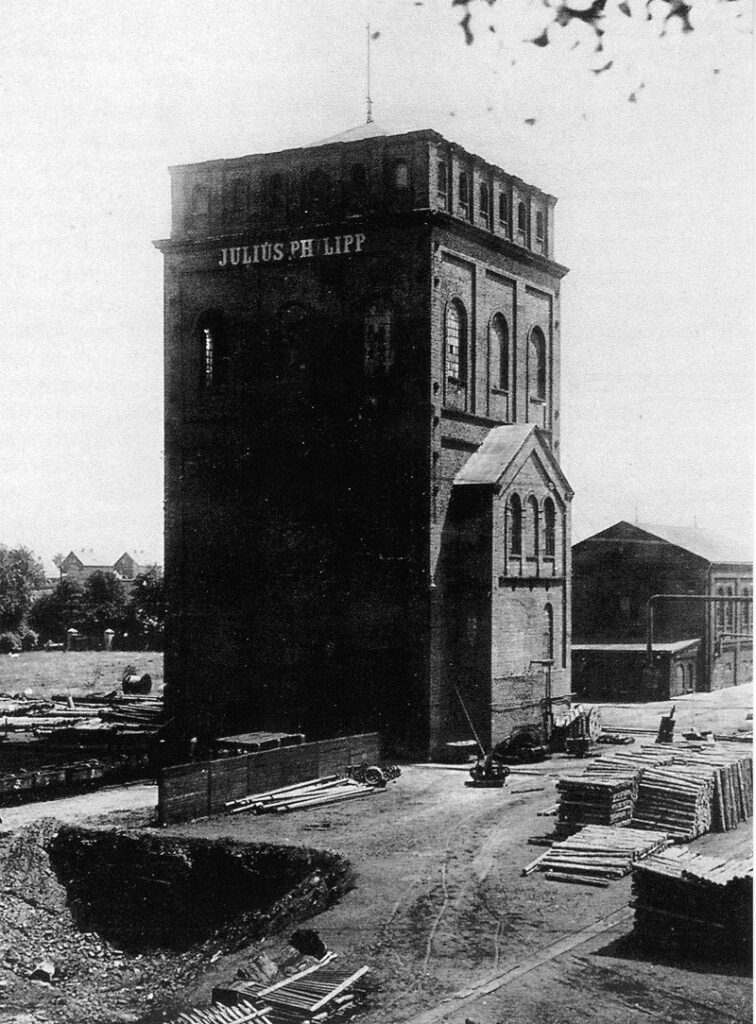THE MALAKOW TOWER JULIUS PHILIPP
From 1873-1875, a malakow tower was built on the site of the Julius Philipp colliery to extract coal from great depths (about 670 m). Three years after its completion, coal production began. In the following years, the plant was further expanded and a second shaft and a coking plant were added. Around 1900, around 1,000 miners were producing over 300,000 tons of hard coal per year at the mine.
In 1905, coal mining largely ceased, and in 1927 the last surface facilities were demolished, with only the Malakow Tower remaining.
Of the total of fourteen surviving malakow towers in the Ruhr region, four alone are located in the city of Bochum. They document mining after 1850, when the first large collieries were built along the old Hellweg. The mighty walls with diameters of up to more than two meters were statically justified for this type of winding tower. They had to support the high rope weights that resulted from the greater depths.
In its architecture, Malakov Tower Julius Philip is committed to historicism. The popular name “Malakov Towers” originated in connection with the reports about the Crimean War (1853-1856), in which the conquest of the Malakov Fort gave the decisive turn to the Sevastopol fortress. For a long time the fort had withstood the attacks, so that during this period the motif of “Fort Malakov” came to epitomize strength, monumentality and resilience – qualities that were also attributed to the masonry winding towers built for the first time during this period. Eventually, the name “Malakow Tower” became established as the name for these new winding towers.
After extensive and careful renovation, the Institute for the History of Medicine and the Medico-historical Collection of the Ruhr University moved into the listed tower in 1990. In 2005, with the appointment of Professor Dr. Dr. Jochen Vollmann, the scope of the institute was expanded and it is now called the Institute for Medical Ethics and History of Medicine.
The Medico-historical Collection comprises over 10,000 objects.


